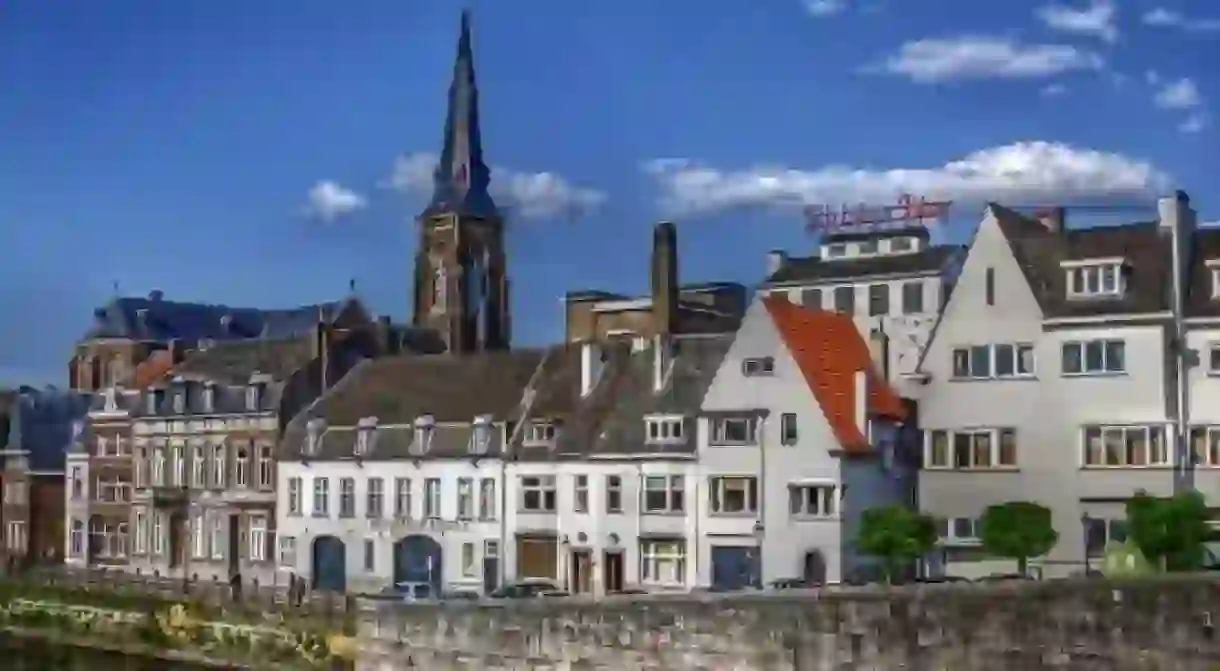Discovering the Artistic Soul of Maastricht

Claudia Costa explores the Dutch city of Maastricht and finds an array of artistic delights in this uniquely cultural metropolis.

The city of Maastricht lies in a favoured location, right in the heart of Europe and at the most southern corner of The Netherlands. It is also known as “the sunniest city of the Netherlands”, in a country where rain, wind and grey skies dominate most of the days, the city boasts a very rich and ancient past dating back to Roman times.
After Amsterdam, Maastricht is the second most prominent city in the Netherlands in terms of cultural heritage and is one of the candidates to become the European Capital of Culture in 2018, competing against other Dutch sister-cities such as Eindhoven, The Hague and Utrecht.
Although a miniature-sized city, if compared to other cultural hubs in Europe, art is literally everywhere in Maastricht: its artistic landscape is very varied and dynamic, with events ranging from traditional art exhibitions, concerts and performances to video art installations, dance and lightshows in public spaces to blind-concerts held in venues completely immersed in the dark.
The video art BodyTalks exhibition, held in October 2011 through the streets of Maastricht, aimed at giving back public space to the public itself and at the same time modifying it through art: screens were hung on the windows of empty shops, thus bringing them back to life, and capturing the attention of passers-by with unusual and original choreographies defying conventions and logic.
The lightshow Lichtspektakel Hoofdwacht Vrijthof was another example for the re-appropriation of public space and turned the façade of the historical Hoofdwacht building, right on one of the main squares, into a sort of open air cine-museum: the seven windows of the building each represented a distinct historical period in the history of the city illustrated through the elaborate interaction of light, 3D and sound effects.

Ten minutes’ walk away from the historical centre lies Centre Ceramique: partly museum, exhibition centre and public library, this cultural institution offers a very intense program of activities, debates, courses and lectures mainly addressed at the Dutch speaking population of the city.
Special attention is also devoted to the big community of expatriates and international students flowing into the city every year: Maastricht University offers a rich program of open lectures, debates, movie screenings and concerts through the organisation Studium Generale.
The art-house cinema Lumiere is a further peculiarity of the city and well reflects its international character: with screenings of original versions of art movies from all over the world, art and photography exhibitions and debates Lumiere is not a cinema oriented towards commercial or mainstream movies and preserves the artistic touch of a city entirely immersed in art.
If Maastricht was a musical genre it would be jazz: several times during the year the pubs and bars of the centre become the stage of jazz festivals such as the Jekker Jazz Maastricht held in October, while the elegantly decorated interiors of the Vrijthof Theater are the favoured venue for opera, cabaret and dance performances.
The inner city streets are dotted with art galleries and ateliers while the Jeker Kwartier area is a real paradise for antique shops lovers.
Every April a special event welcomes art collectors from all over the world: the Tefaf Art and Antiques Fair was called by the Wall Street Journal ‘the art world’s yearly pilgrimage’ and offers a unique occasion to approach the field of art and antiques from a professional point of view. If art is what you are looking for, a visit to Maastricht will surely surprise you and unveil one of the less known pearls of the artistic heart of Europe.













